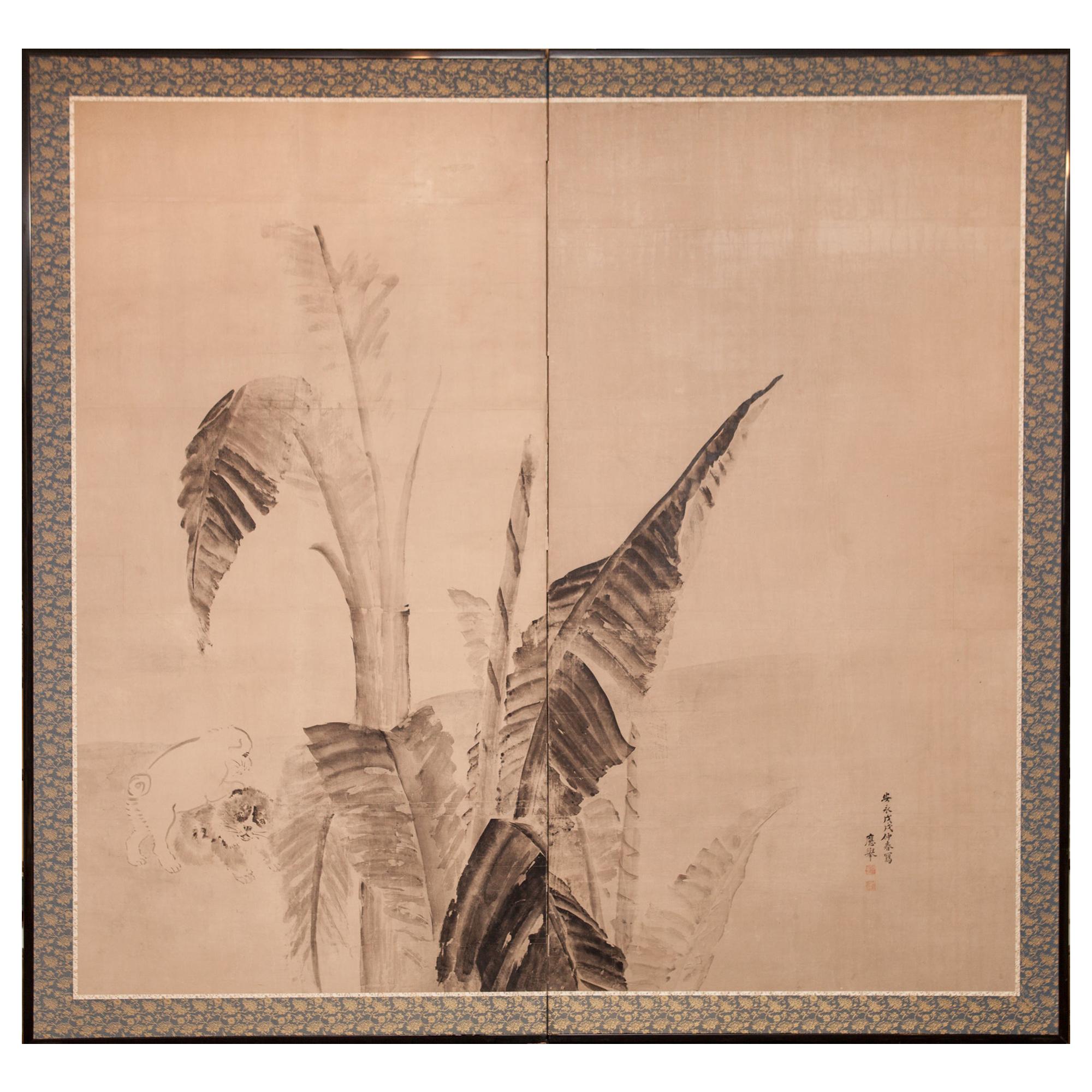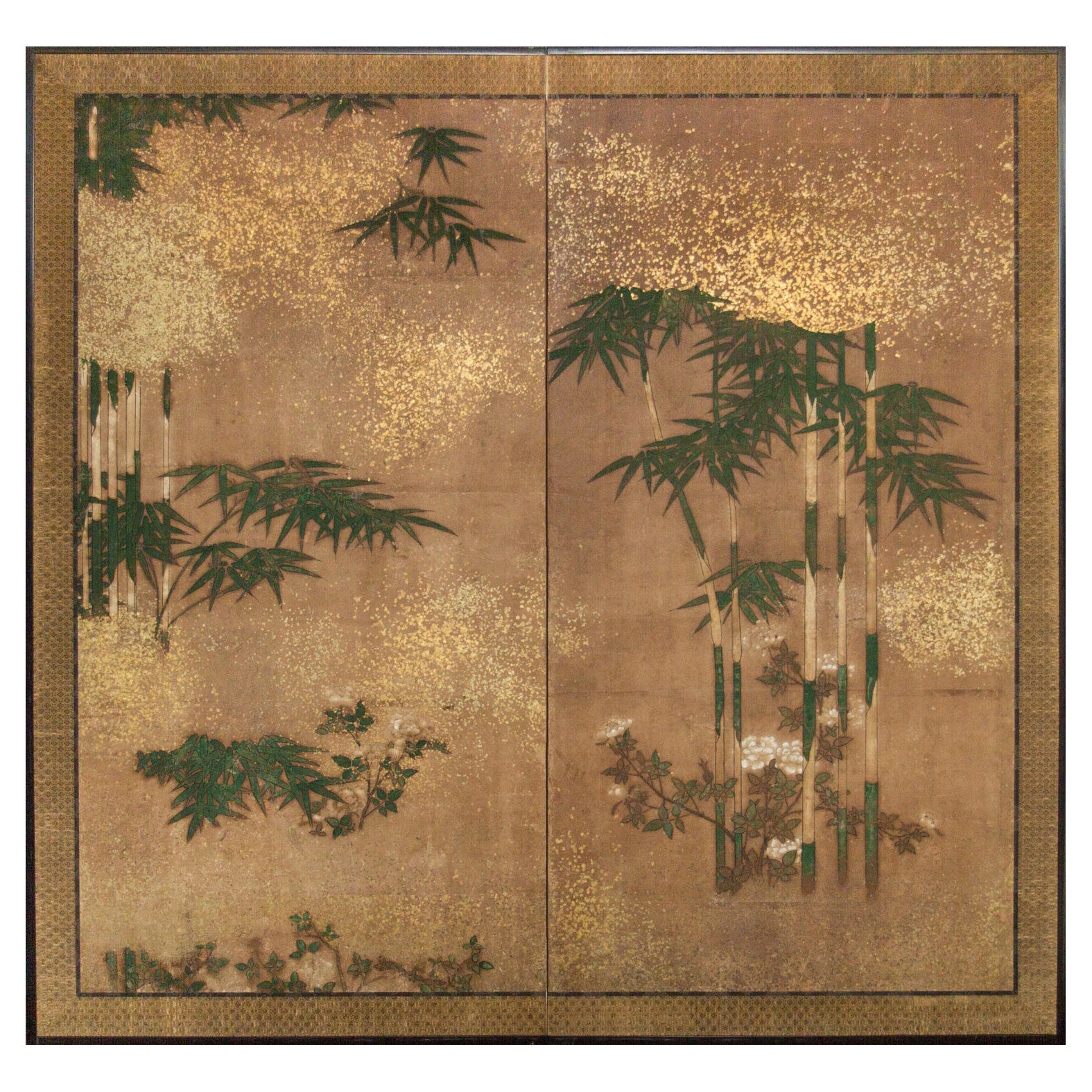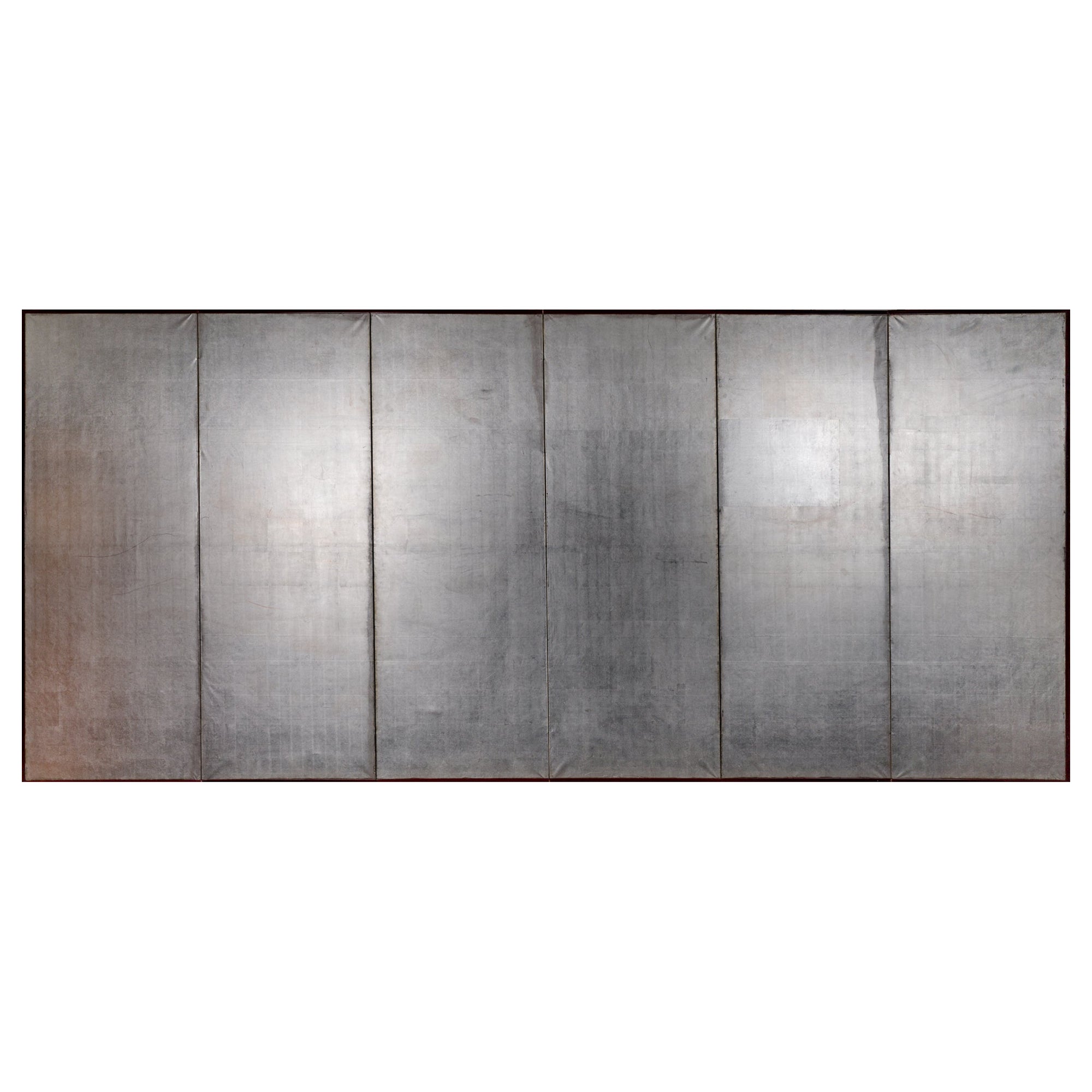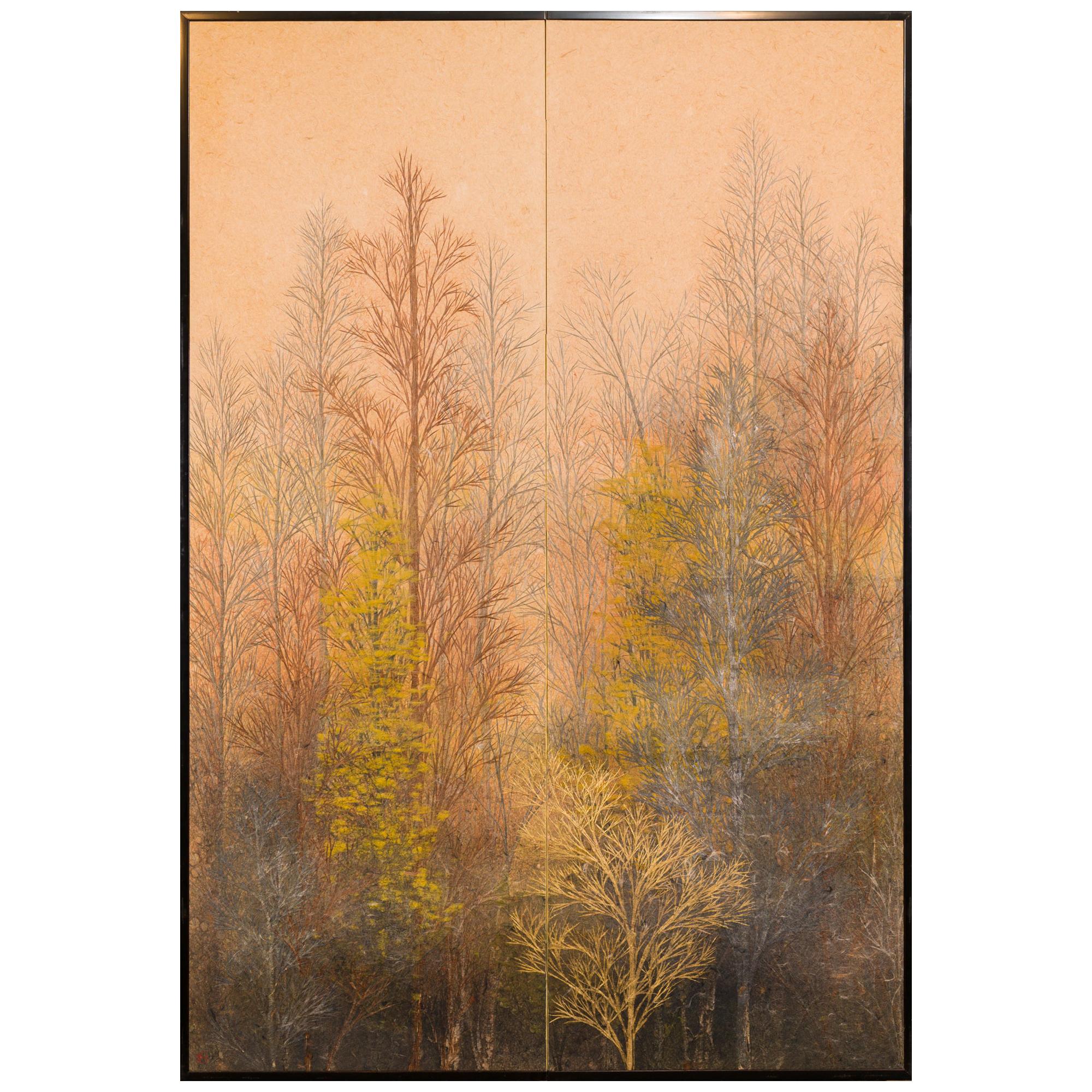Items Similar to Japanese Two Panel Screen Plain Mulberry Paper
Want more images or videos?
Request additional images or videos from the seller
1 of 5
Japanese Two Panel Screen Plain Mulberry Paper
About the Item
(no image) on lattice frame. Pair available; Sold seperately.
- Dimensions:Height: 60.13 in (152.74 cm)Width: 60.13 in (152.74 cm)Depth: 1 in (2.54 cm)
- Materials and Techniques:
- Place of Origin:
- Period:
- Date of Manufacture:circa 1950
- Condition:Condition report upon request.
- Seller Location:Hudson, NY
- Reference Number:
About the Seller
5.0
Recognized Seller
These prestigious sellers are industry leaders and represent the highest echelon for item quality and design.
Established in 1971
1stDibs seller since 2008
150 sales on 1stDibs
Typical response time: 6 hours
Associations
The Art and Antique Dealers League of AmericaAntiques Associations Members
- ShippingRetrieving quote...Ships From: Hudson, NY
- Return PolicyThis item cannot be returned.
More From This SellerView All
- Japanese Two Panel Screen Ink Painting of Banana Leaves on Mulberry PaperLocated in Hudson, NYEdo period (dated 1787) beautiful painting of unfurling palm leaves with romping puppies in the background. Ink painting (sumi-e) on mulberry paper. Signature reads: Okyo. Calligraph...Category
Antique Late 18th Century Japanese Edo Paintings and Screens
MaterialsPaper
- Japanese Two Panel Screen: Bamboo Grove on Mulberry Paper with Gold DustLocated in Hudson, NYKano School painting of a bamboo grove with blooming flowers and gold dust mists. Painted in mineral pigments on mulberry paper with gold dust and a silk brocade border.Category
Antique Early 19th Century Japanese Paintings and Screens
MaterialsGold
- Japanese Six Panel Screen: Plain Silver Leaf on PaperLocated in Hudson, NY(no image) With beautiful oxblood color lacquer frame with 19th century bronze mounts.Category
Early 20th Century Japanese Paintings and Screens
MaterialsBronze, Silver Leaf
- Japanese Two Panel Screen, TurkeysLocated in Hudson, NYMineral pigments on silk, mounted on a gold panel, in silk border. Signature and seal read: Yoho.Category
Early 20th Century Japanese Paintings and Screens
MaterialsSilk
- Japanese Two Panel Screen, ChrysanthemumsLocated in Hudson, NYBeautiful white chrysanthemums are emphasized by heavy gold on a soft floral landscape, while gold clouds create a striking and dream-like floral scene. Gold leaf and gofun with min...Category
Antique Early 18th Century Japanese Paintings and Screens
MaterialsGold, Gold Leaf
- Japanese Two Panel Screen Late Autumn Forest, Rare Obara Paper Art ScreenLocated in Hudson, NYA masterful landscape made entirely of carefully arranged mulberry paper fibers in a Japanese art practice called Obara. Accented with gold leaf. Incredible craftsmanship and a wonderful rendering of bare trees. Made by Yamauchi Issei (b. 1929), stamped in the corner. Issei is well known throughout Japan as the leading artist in Obara Paper Art. Starting in 1948, he apprenticed with Fuji Tatsukichi, a leading proponent of the arts and crafts movement in Japan who worked to Revive many cultural traditions on the brink of extinction. Issei started exhibiting in the Nitten in 1953, won the Gold Medal in 1963, and eventually became a juror. His artwork was given as a gift to the Showa Emperor of Japan, as well as dignitaries such as General Douglas MacArthur...Category
Mid-20th Century Japanese Showa Paintings and Screens
MaterialsGold Leaf
You May Also Like
- Japanese Two-Panel Gold Leaf Screen by YoshikawaLocated in Rio Vista, CAStunning Japanese two-panel folding screen featuring a gold leaf landscape signed by Yoshikawa. Delicate scene of cherry and willow trees near a village with high mountains in the ba...Category
20th Century Chinese Meiji Paintings and Screens
MaterialsBrass, Gold Leaf
- Japanese Showa Two Panel Screen Blossoming Prunus TreeLocated in Rio Vista, CASerene Japanese Showa period two-panel folding byobu screen depicting a large spring blossoming prunus tree or plum tree. Beautifully painted with ink and natural color pigments on m...Category
20th Century Japanese Showa Paintings and Screens
MaterialsBrass
- Japanese Meiji Two Panel Screen Geese and ReedsLocated in Rio Vista, CAFantastic Japanese late Meiji period two-panel byobu screen by Hashimoto Koshu. The large screen features two white geese amid brightly colored reeds. The symbolism of geese and reeds was introduced to Japan from China in the 13th century. This was a popular subject for Japanese zen artists of the period. Beautifully crafted with exceptional brush strokes and details. Made with natural pigments in dramatic vivid colors of white, pink, and mint green on a silk background of gilt. Circa 1900 with artist seal on bottom right corner. Koshu studied Western art under...Category
20th Century Japanese Meiji Paintings and Screens
MaterialsSilk, Wood, Paper
- Japanese Edo Two-Panel Screen Flowers of AutumnLocated in Rio Vista, CAImpressive early 19th century Japanese Edo period two-panel screen featuring flowering plants and grasses of autumn. Painted in the Tosa School style Bunka Bunsei period or Ogosho pe...Category
Antique 19th Century Japanese Edo Paintings and Screens
MaterialsSilk, Wood, Paper
- Japanese Style Two-Panel Screen Winter Goose in FlightLocated in Rio Vista, CADramatic Showa period two panel folding byobu screen depicting a large white goose in flight in an evening snow covered winter landscape. Made in the American school style watercolor...Category
20th Century Showa Paintings and Screens
MaterialsBrass
- Japanese Edo Two Panel Screen Deities by Yokoyama KazanLocated in Rio Vista, CAWhimsical Japanese late Edo period two-panel screen circa 1800 by Yokoyama Kazan (Japanese 1784-1837). The screen depicts four of the seven Gods or deities ...Category
Antique 19th Century Japanese Edo Paintings and Screens
MaterialsBrass, Gold Leaf
Recently Viewed
View AllMore Ways To Browse
Framed Pairing
Screened Panels
Japanese Paper
Circa Screen
Vintage Plainer
Screen Midcentury
Japanese Circa 1950
Mid Century Panel Screens
Japanese Two Panel
Lattice Frame
Japanese Screen Mid Century
Midcentury Japanese Screen
Lattice Panels
Lattice Panel
Used Lattice Panels
Framed Japanese Panel Painting
Asian Panels Pair
Asian Two Panel Screen





